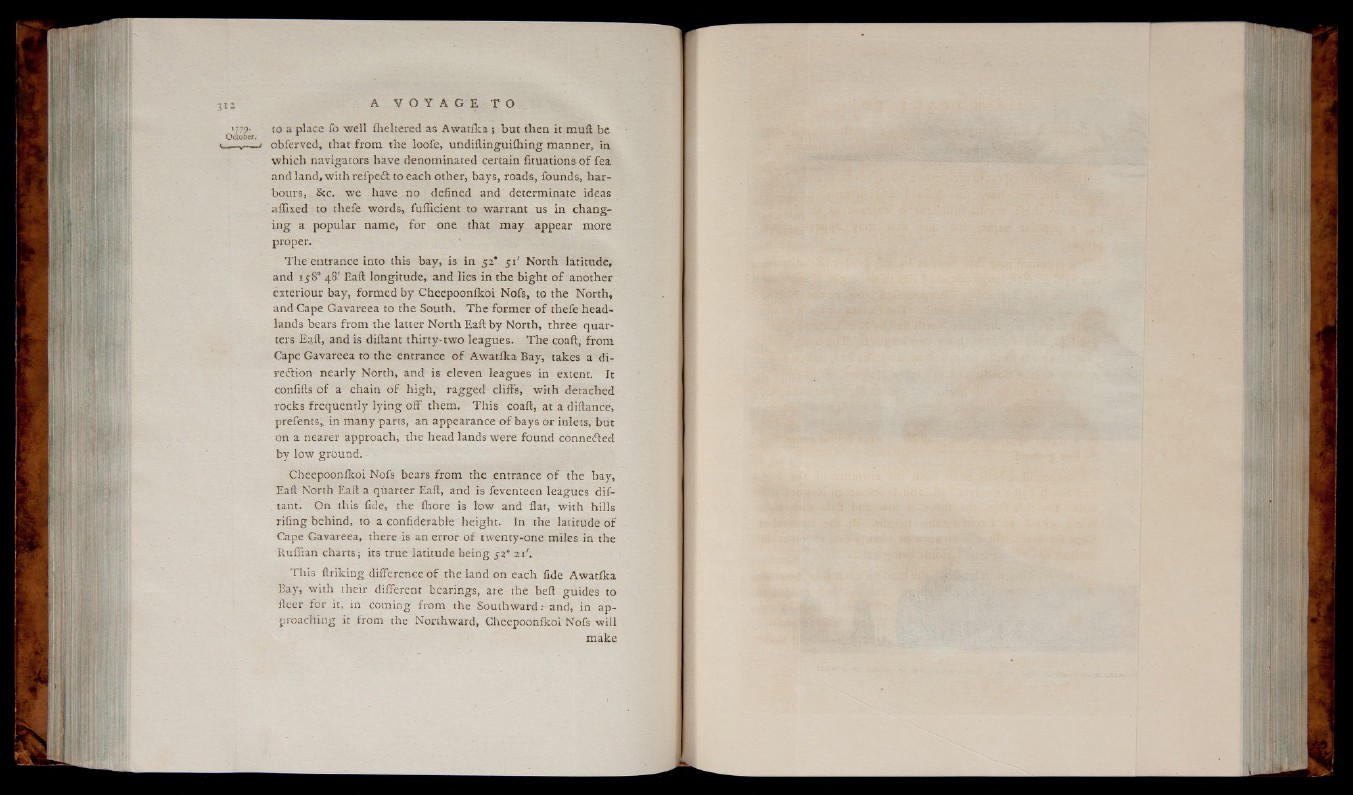
to a place fo well fheltered as Awatika } but then it muft be
obferved, that from the loofe, undiftinguilhing manner, in
which navigators have denominated certain fituations o f fea
and land, with refpecSt to each other, bays, roads, founds, harbours,
&c. w e have no defined and determinate ideas
affixed to thefe words, fufficient to warrant us in changin
g a popular name, fo r one that ma y appear more
proper.
The entrance into this bay, is in 52* 51' North latitude,
and 158" 48' Eail longitude, and lies in the bight o f another
exteriour bay, formed by Cheepoonlkoi Nofs, to the North,
and Cape Gavareea to the South. T he former o f thefe headlands
bears from the latter North Eaft by North, three quarters
Eaft, and is diftant thirty-two leagues. The coaft, from
Cape Gavareea to the entrance o f Awatika Bay, takes a direction
nearly North, and is eleven leagues in extent. It
confifts o f a chain o f high, ragged cliffs, with detached
rocks frequently ly in g o ff them. T h is coaft, at a diftance,
prefents, in many parts, an appearance o f bays or inlets, but
on a nearer approach, the head lands were found connected
by low ground.
Cheepoonlkoi Nofs bears from the entrance o f the bay,
Eaft North Eaft a quarter Eaft, and is feventeen leagues diftant.
On this fide, the Ihore is low and flat, with hills
rifing behind, to a confiderable height. In the latitude o f
Cape Gavareea, there is an error o f twenty-one miles in the
Ruffian charts; its true latitude being 52° 21'.
This lin k in g difference o f the land on each fide Awatika
Bay, with their different bearings, are the beft guides to
fteer for it, in coming from the Southward r and, in approaching
it from the Northward, Cheepoonlkoi Nofs w ill
make